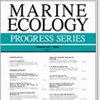耳石微化学确定浅滩、潮间带河口是新西兰沙比目鱼的重要繁殖地
IF 2.1
3区 环境科学与生态学
Q2 ECOLOGY
引用次数: 0
摘要
摘要:河口为幼鱼提供了重要的栖息地、食物和避难所。耳石中的元素浓度可以追溯性地确定对成鱼种群贡献过大的河口育苗栖息地,为渔业和沿海生态系统提供有价值的信息。本研究的目的是:(1)比较从新西兰奥塔哥东部 9 个河口采集的沙鲽幼鱼(0 岁以上)耳石的元素特征;(2)评估耳石微化学在确定沿海陆架沙鲽成鱼(1 岁以上)的育苗栖息地方面的应用。2020 年 11 月采集了沙鲽幼鱼的耳石,2022 年冬春采集了同一批沙鲽成鱼的耳石。激光烧蚀电感耦合等离子体质谱法分别采用深度剖面和烧蚀剖面对幼鱼和成鱼耳石沉积后区域的 12 种元素浓度进行了量化。发现不同河口沉积后的元素浓度存在显著差异。利用主坐标的典型分析法,对幼年沙鲽和成年沙鲽的育苗地进行了分类。根据新西兰河口营养指数分类计划对河口进行分组,使幼体分类的总体准确率从56.7%(51/90)提高到82.2%(74/90)。成年沙比目鱼(n = 78)被归类为来自以浅潮间带为主的河口(62%),其次是奥塔哥港(32%)以及浅水、停留时间短的河流和潮汐河流及毗邻泻湖的河口(6%)。这些结果突显了耳石微化学如何为商业上重要的鱼种提供利用关键河口育苗栖息地的信息。本文章由计算机程序翻译,如有差异,请以英文原文为准。
Otolith microchemistry identifies shallow, intertidal-dominated estuaries as important nurseries for sand flounder in New Zealand
ABSTRACT: Estuaries provide critical habitat, food, and refuge for juvenile fish. Elemental concentrations in otoliths can retrospectively identify estuarine nursery habitats that contribute disproportionately to adult populations, providing valuable information for fisheries and coastal ecosystems. The present study aimed to (1) compare elemental signatures of juvenile (age 0+) sand flounder Rhombosolea plebeia otoliths collected from 9 estuaries in east Otago, New Zealand, and (2) assess the application of otolith microchemistry for identifying the nursery habitats contributing to adult (age 1+) sand flounder from the coastal shelf population. Otoliths from juvenile flounder were collected in November 2020, and adults of the same cohort were collected in the winter/spring of 2022. Laser ablation inductively coupled plasma mass spectrometry quantified 12 element concentrations within the post-settlement region of juvenile and adult otoliths using depth-profiling and ablation transects, respectively. Significant differences in post-settlement elemental concentrations were detected among estuaries. Juvenile and adult sand flounder were classified to their nursery origin using canonical analysis of principal coordinates. Grouping estuaries by the New Zealand Estuary Trophic Index classification scheme improved the overall juvenile classification accuracy from 56.7% (51/90) to 82.2% (74/90). Adult sand flounder (n = 78) were classified to have originated from shallow intertidal dominated estuaries (62%), followed by Otago Harbour (32%) and shallow, short residence time river and tidal river with adjoining lagoon estuaries (6%). The results highlight how otolith microchemistry can provide information on the use of critical estuarine nursery habitats for a commercially important species.
求助全文
通过发布文献求助,成功后即可免费获取论文全文。
去求助
来源期刊

Marine Ecology Progress Series
环境科学-海洋学
CiteScore
5.30
自引率
8.00%
发文量
238
审稿时长
3 months
期刊介绍:
The leading journal in its field, MEPS covers all aspects of marine ecology, fundamental and applied. Topics covered include microbiology, botany, zoology, ecosystem research, biological oceanography, ecological aspects of fisheries and aquaculture, pollution, environmental protection, conservation, and resource management.
 求助内容:
求助内容: 应助结果提醒方式:
应助结果提醒方式:


